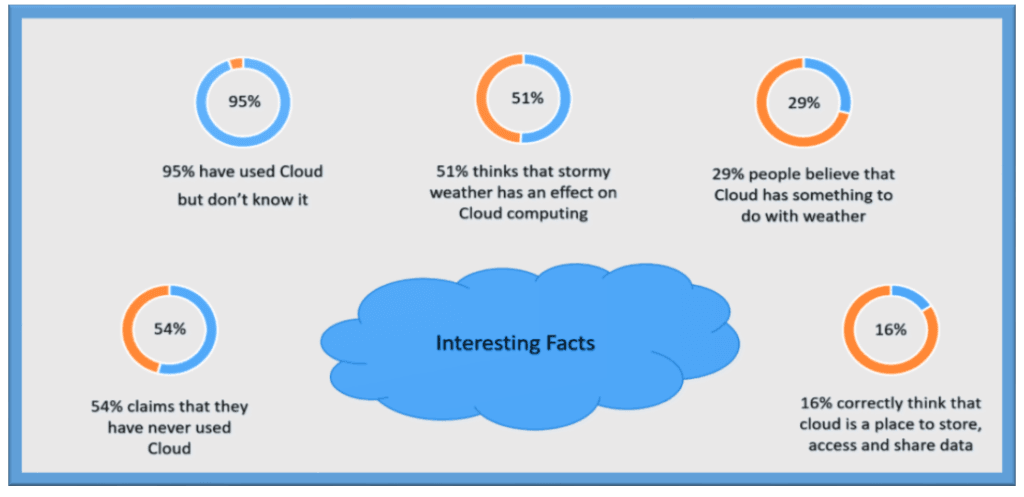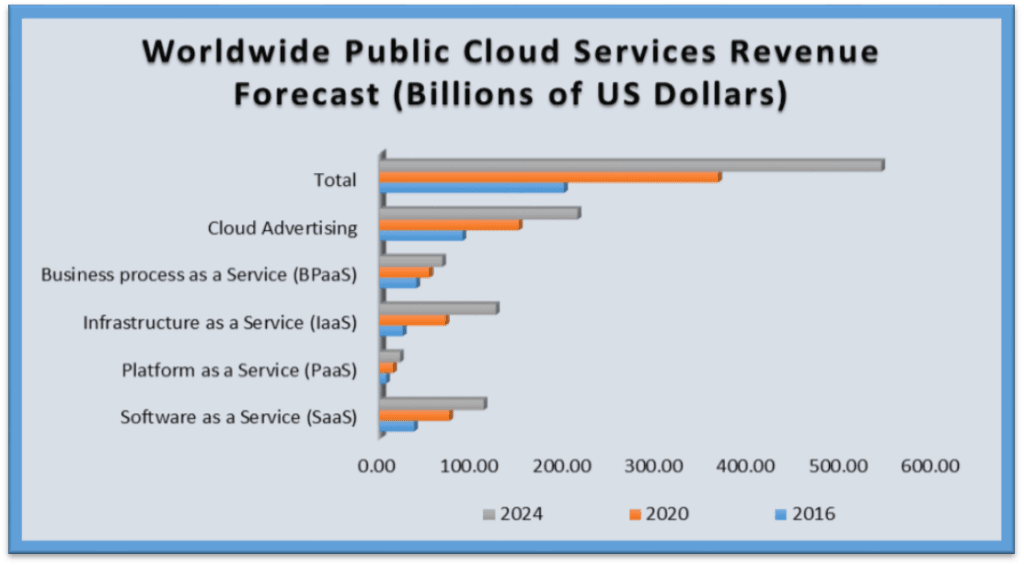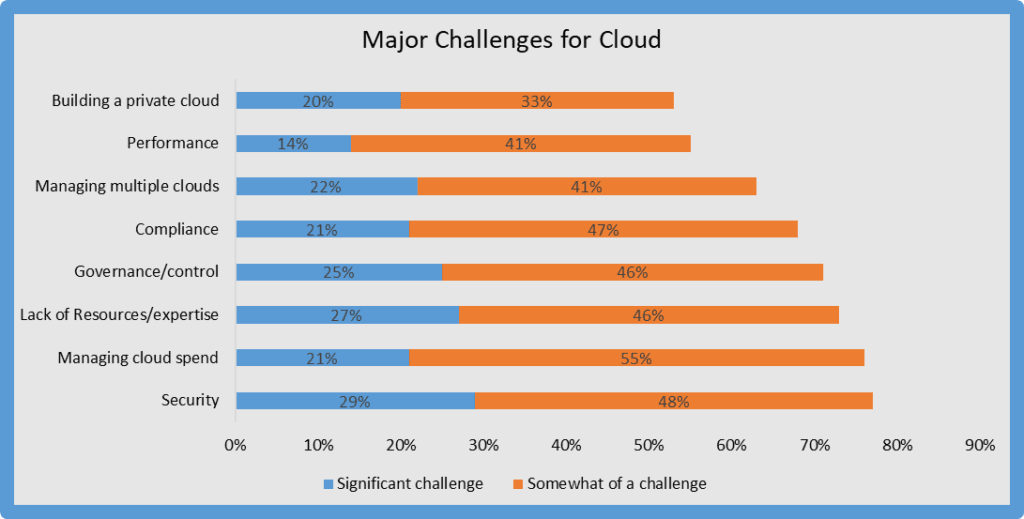
تكنولوجيا الحوسبة السحابية العصر التالي لتخزين البيانات العامة والخاصة
قد يبدو أن الحوسبة السحابية أو التكنولوجيا جديدة في السوق، ولكن الحقيقة الفعلية تكمن في عام 1955 عندما استخدم جون مكارثي، الذي استخدم في الأصل مصطلح "الذكاء الاصطناعي". منذ الخمسينيات من القرن الماضي، اعتادت الشركات على امتلاك نظام معقد ومتغير باستمرار لأجهزة الكمبيوتر المركزية لمعالجة البيانات. من أجل كبح هذا التعقيد، اعتادت الشركات على شراء جهاز واحد أو أكثر وتنفيذ "المشاركة الزمنية" من أجل زيادة العائد على الاستثمار. مع استخدام المشاركة الزمنية، يمكن لعدة مستخدمين الوصول إلى جهاز كمبيوتر مركزي من محطات متصلة، والتي لم تحمل أي قوة معالجة خاصة بها. هذا النوع من القدرة الحسابية المشتركة هو النظرية الأساسية للسحابة.
في عام 1969، ساعد ج. س. ر. ليكليدر في تطوير ARPANET (شبكة وكالة مشاريع الأبحاث المتقدمة)، وهي نسخة أساسية "جدًا" من الإنترنت حيث يكون الجميع مترابطين عن طريق أجهزة الكمبيوتر، وقادرين على الوصول إلى المعلومات من أي مكان. تعد شبكة الكمبيوتر بين المجرات، والمعروفة باسم الإنترنت، ضرورية للوصول إلى السحابة. في حوالي عام 1970، تم تقديم مفهوم الآلات الافتراضية حيث أصبح من الممكن، باستخدام برنامج المحاكاة الافتراضية، تنفيذ نظام تشغيل واحد أو أكثر في وقت واحد في بيئة ما. في أواخر التسعينيات، تم استخدام مصطلح "السحابة" لتمثيل مساحة الحوسبة بين المزود والمستخدم النهائي. في عام 2002، أطلقت أمازون خدمات البيع بالتجزئة القائمة على الويب، والتي كانت أول شركة كبرى تفكر في استخدام 10٪ فقط من طاقتها (وهو أمر شائع في ذلك الوقت) كمشكلة يجب حلها. في وقت لاحق في عام 2006، توصلوا إلى Amazon Web Services، التي تقدم خدمات عبر الإنترنت لتوفير مجموعة متنوعة من الخدمات القائمة على السحابة بما في ذلك التخزين والحساب و "الذكاء البشري" لمواقع الويب أو العملاء الآخرين. بعد هذا المسار، في العام نفسه، أطلقت Google خدمات Google Docs.

معظم الناس ليسوا واضحين بشأن ما تعنيه "الحوسبة السحابية" فعليًا. بعبارات عامة، هو تقديم خدمة مستضافة عبر الإنترنت. فهو يمكّن الشركات من استهلاك مورد حوسبة، مثل آلة افتراضية (VM) أو تخزين أو تطبيق، كأداة مساعدة تمامًا مثل الكهرباء بدلاً من بناء وصيانة البنى التحتية للحوسبة داخل الشركة.
نموذج تطوير الحوسبة السحابية
يمكننا تصنيف الخدمة إلى ثلاثة أنواع، أي خاصة وعامة ومختلطة. في نموذج خدمة السحابة الخاصة، يتم تقديم الخدمة من مركز بيانات تجاري للمستخدمين الداخليين. بينما في حالة نموذج خدمة السحابة العامة، يقدم موفر خدمة سحابية تابع لجهة خارجية الخدمة عبر الإنترنت. وأخيرًا، خدمة السحابة المختلطة هي مزيج من كل من السحابة العامة والخاصة.
أنواع خدمات الحوسبة السحابية
تنقسم خدمات الحوسبة السحابية بشكل أساسي إلى ثلاث فئات، أي البرامج كخدمة (SaaS) والبنية التحتية كخدمة (IaaS) والمنصة كخدمة (PaaS).
خدمة SaaS هي نموذج توزيع يقدم تطبيقات برمجية عبر الإنترنت؛ تسمى هذه التطبيقات خدمات الويب. يمكن للمستخدمين الوصول إلى تطبيقات وخدمات SaaS من أي مكان باستخدام جهاز كمبيوتر أو جهاز محمول بمساعدة الوصول إلى الإنترنت. الشركات التي تقدم مثل هذه الخدمات هي SalesForce و NetSuits و Concur.
يقوم موفرو خدمة IaaS، مثل AWS وMicrosoft Azure وGoogle Compute Engine، بتوفير مثيل خادم افتراضي وتخزين، بالإضافة إلى واجهة برمجة تطبيقات (APIs) التي تمكن المستخدمين من ترحيل أحمال العمل إلى جهاز افتراضي. يتمتع المستخدمون بسعة تخزين مخصصة ويمكنهم بدء وإيقاف والوصول إلى وتهيئة الجهاز الافتراضي والتخزين حسب الرغبة.
في نموذج خدمة PaaS، يستضيف مزودو السحابة أدوات التطوير على بنيتهم التحتية. يصل المستخدمون إلى هذه الأدوات عبر الإنترنت باستخدام واجهات برمجة التطبيقات أو بوابات الويب أو برنامج البوابة. يتم استخدام PaaS لتطوير البرامج، ويستضيف العديد من موفري PaaS البرنامج بعد تطويره. الشركات التي تقدم مثل هذه الخدمات هي AWS Elastic Beanstalk وGoogle App Engine وHeroku.

وفقًا لـ UMI، من المتوقع أن ينمو سوق خدمات السحابة العامة في جميع أنحاء العالم بنسبة 15.7٪ في عام 2020 ليبلغ إجماليه 367 مليار دولار، ارتفاعًا من 236.7 مليار دولار في عام 2017.
التحديات الرئيسية

منذ بداية السحابة العامة، كانت الشركات قلقة بشأن المخاطر الأمنية المحتملة، وهذا لم يتغير حتى الآن. في استطلاع RightScale الذي تم إجراؤه مؤخرًا، كان التحدي الأول الذي ذكره المشاركون، حيث قال ما مجموعه 77٪ أن أمن السحابة يمثل تحديًا، بما في ذلك 29٪ ممن وصفوه بأنه تحد كبير.
الخلاصة
بمساعدة الحوسبة السحابية والتكنولوجيا التي تدعمها، لدينا فرص وقدرات كبيرة. يمكن للحوسبة السحابية أن تفتح عالمًا جديدًا من المنصات والوظائف والتطبيقات وغير ذلك الكثير. ستوفر الحوسبة السحابية البنية التحتية الرقمية للمدن الذكية في المستقبل، حيث من المقدر أن يعيش 6 مليارات نسمة من سكان العالم بحلول عام 2045. ستكون المصاعد الذكية ومواقف السيارات، والسيارات ذاتية القيادة وسيارات الأجرة بدون طيار، والقطارات ومترو الأنفاق والمزارع ومحطات الطاقة أكثر أمانًا وأفضل إدارة، ولن يكون ذلك ممكنًا إلا من خلال قدرة السحابة على تخزين البيانات وتحليلها.
